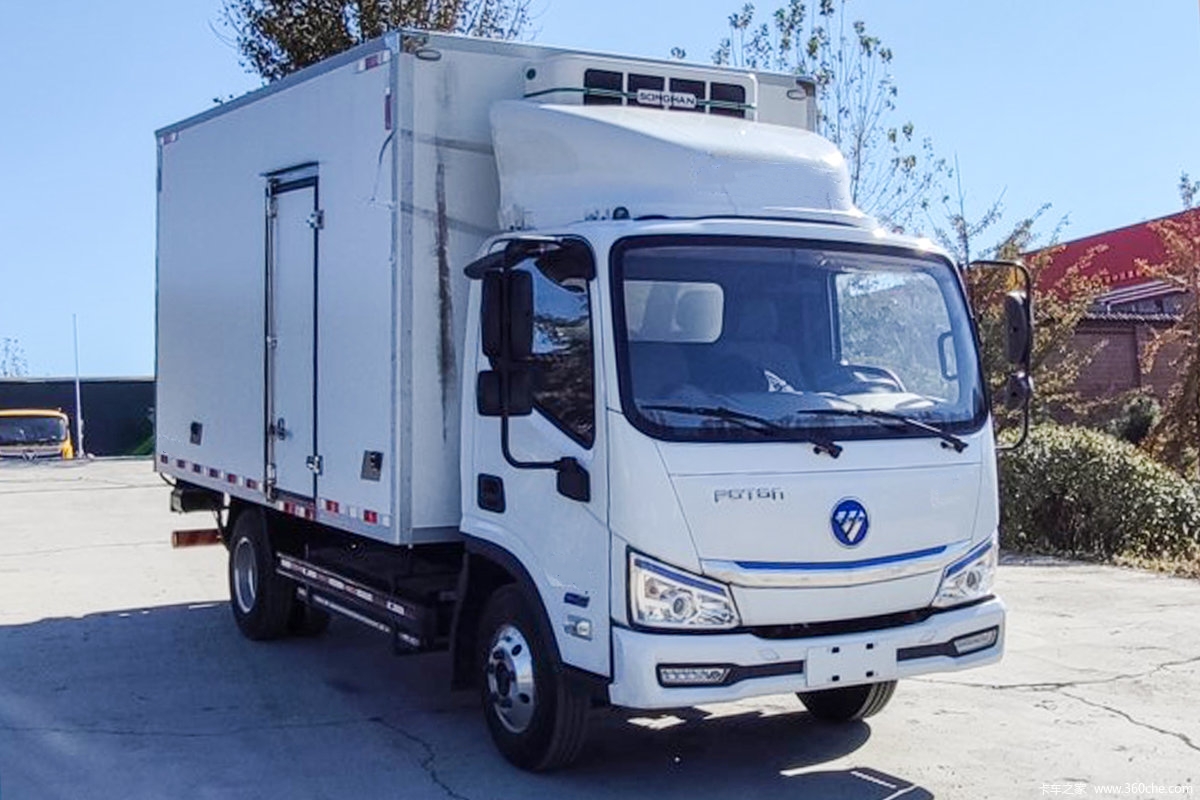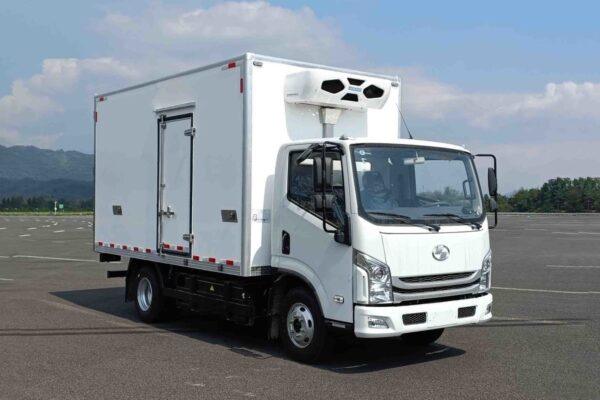Electric Truck Knowledge
Before Buying an Electric Truck Get to Know the Parameters of the Lithium Battery First
Posted on by Electric Trucks
Under the multiple influences of environmental protection and policies, the sales volume of new energy vehicles, especially electric vehicles, has been rising steadily and growing rapidly.
However, behind the rapid development, the comments on electric vehicles have always been mixed. For example, they are energy-saving but the purchase cost is too high, they are environmentally friendly but the cruising range is insufficient, etc. In fact, the decisive factors of these contradictions are the core components of electric vehicles, the “three electrics” – battery, motor, and electronic control.
Among the “three electrics”, the battery plays the most important role. As the saying goes, “Even a clever woman can’t cook without rice.” Even if the electronic control and motor technologies are advanced, if the performance of the battery, which is the source of power, is not good, the performance of the entire vehicle will be greatly reduced. This article will briefly discuss the main basic parameters of the battery.
I. A Brief History of Batteries
The earliest development of batteries can be traced back to 1800 when the Italian scientist Volta successfully developed the Volta battery, which was the first battery that could be actually applied in the world. In 1859, the French scientist Plante invented the lead-acid battery, which was the first rechargeable battery in the world.
Since then, the continuous improvement of scientific and technological levels has promoted the emergence of various batteries. In the 1950s, the alkaline zinc-manganese dry battery came out. In the 1960s, the fuel cell was successfully developed. In the 1970s, various lithium batteries were successfully developed. In the 1980s, the hydrogen-nickel battery came out, and in the 1990s, the lithium-ion battery appeared. Battery technology has ushered in a “blowout” development.
The lithium-ion battery (hereinafter referred to as the lithium battery) used in the electric vehicles discussed in this article also originated from this development period. The development of lithium batteries has also gone through a “bumpy” exploration period, and the general development can be divided into the following three stages:
In the first stage, since the negative electrode material is lithium metal and its alloy and it is not rechargeable, the lithium battery in this stage is more precisely a primary lithium metal battery.
In the second stage, the negative electrode material is still lithium metal and its alloy, but the positive electrode material is replaced by intercalation compounds such as MoS₂ instead of transition oxides, realizing the reciprocal migration of lithium ions between the positive and negative electrodes of the battery, that is, it can be recharged and discharged repeatedly. Therefore, the lithium battery in this stage is essentially a secondary lithium metal battery.
In the third stage, the negative electrode material is conductive electrodes such as graphite and coke, and the positive electrode material is lithium-containing compounds, such as lithium-intercalated transition metal oxides, lithium-intercalated metal sulfides, and lithium-containing salt compounds. The lithium battery in this stage is essentially the lithium-ion battery we call now.
II. Structure of Lithium Batteries
The main structure of a lithium battery is divided into the positive electrode, negative electrode, electrolyte, separator, and casing.
(1) Positive Electrode
- Characteristics: Stable electrochemical energy, a structure that is not easy to decompose, and the higher the specific capacity, the better.
- Classification (Commercial): Lithium iron phosphate (LFP), Lithium cobaltate (LCO), Lithium manganate (LMO)
- Ternary Materials: Lithium nickel manganese cobalt oxide (NCM), Lithium nickel manganese aluminum oxide (NCA)
The positive electrode material accounts for 30-40% of the cost of a lithium battery and directly affects the battery performance. Even the classification of lithium batteries in the market nowadays is based on the positive electrode material, which shows the importance of the positive electrode material to lithium batteries.
(2) Negative Electrode
- Characteristics: High specific capacity, good charge and discharge reversibility, and a lower electrode potential than lithium.
- Classification (Commercial): Currently, carbon-based graphite materials are mainly used (with limited specific capacity)
- Future Trend: Silicon-carbon composite materials (with a large specific capacity, 2-3 times that of ordinary graphite materials)
(3) Electrolyte
- Characteristics: High ionic conductivity, a wide electrochemical stability window, no reaction with the electrode, safety, non-toxicity, and no pollution.
- Composition: Solvent (30%): Ethylene carbonate, Dimethyl carbonate, etc.
- Solute (50%): Lithium salts (LiPF6, LiBF4, etc.), Additives (10%), Others (10%)
III. Parameters of Lithium Batteries
(1) Battery Capacity C: The amount of charge released by the battery under certain conditions, with the unit of mAh or Ah.
According to the usage conditions, the battery capacity can be divided into:
- Theoretical Capacity: The amount of electricity that the battery can release assuming that the active substances are completely utilized.
- Rated Capacity: The amount of electricity that a fully charged battery can release under laboratory conditions.
- Actual Capacity: The amount of electricity that a fully charged battery can release in the actual usage environment (but in line with the specified usage conditions of the battery), which is less than the rated capacity.
(2) Battery Energy: An indicator to measure how much energy the battery can store, with the unit of Wh.
Calculation formula: Energy = Rated Voltage × Working Current × Working Time = UIt = Rated Voltage × Battery Capacity; For example, for the battery of a Xiaomi mobile phone, the battery energy is 7.3Wh = 3.7V × 1960mAh/1000.
Battery energy is an important indicator to measure the work done by the battery to drive the device. If the battery capacity is understood as the volume of water that a reservoir can store, then the battery energy can be vividly understood as the work that the reservoir can do when releasing water from a certain height.
Under the same voltage, the larger the battery capacity, the greater the battery energy. For example, in daily life, replacing the mobile phone battery with a larger capacity battery aims to increase the battery energy. When the working voltage remains unchanged, the battery life of the mobile phone can be improved. So, does this operation also work for electric vehicles?
The answer is not necessarily. Because the way the electric energy is consumed for work in the cruising range of an electric vehicle is different from that of a mobile phone. The weight of the battery will increase with the increase of the battery capacity, and the self-weight of the vehicle will also increase. Therefore, there are two variables, and at this time, it involves another important performance parameter of the battery – energy density.
(3) Energijos tankis: It refers to the energy released per unit volume or unit mass, expressed as volume energy density (Wh/L) or mass energy density (Wh/kg), and is a direct influencing factor of the cruising range of electric vehicles.
Energy density is mainly divided into single-cell energy density and system energy density. The single-cell energy density is the energy density of the smallest unit. For example, if a lithium battery weighs 325g, the rated voltage is 3.7V, and the capacity is 10Ah, then its energy density is 113Wh/kg. The system energy density refers to the energy density of the battery pack or battery panel of the entire vehicle.
The battery pack or battery panel is mainly encapsulated by several single batteries, the battery pack frame, the protective plate, and other electronic components. Therefore, the system energy density is affected by the single-cell energy density and the packaging technology, and is less than the single-cell energy density.
Energy density is also one of the core indicator requirements for subsidies for new energy vehicles. The threshold values of the system energy density in the subsidy standards for new energy vehicles over the years are as follows. From the vehicle configuration released by the Ministry of Industry and Information Technology every month, it can be found that the threshold values of the system energy density over the years can more realistically reflect the current situation of the battery application market – there is still a certain gap from the national planning requirements, and the development of electric vehicles still has a long way to go.
(4) Voltage
There are three types of battery voltages:
- Open Circuit Voltage: The voltage of the battery when it is not connected to an external circuit or external load. The open circuit voltage is proportional to the remaining energy of the battery and is the main basis for the display principle of the remaining power of the electric vehicle.
- Working Voltage: The potential difference between the positive and negative electrodes of the battery during the working state, also known as the load voltage. The working voltage < open circuit voltage because the internal resistance must be overcome during the discharge working state of the battery.
- Discharge Cut-off Voltage: The voltage reached when the battery is fully charged and then discharged until it is completely discharged. If the discharge continues, it is over-discharge, which will damage the life and performance of the battery.
Among the voltage values of a single battery, the voltage of a lithium battery is the highest, which is also one of the main reasons why lithium batteries are used as power batteries.
(5) Charge and Discharge Rate (C)
It represents the magnitude of the charge and discharge current, and numerically it is equal to the multiple of the rated capacity. Charge and Discharge Rate = Charge and Discharge Current ÷ Rated Capacity, expressed by “C”.
(6) Other Parameters
- Cycle Life: Experiencing one charge and discharge is called a cycle. After repeated charging and discharging of the battery, the capacity will gradually decrease. Under certain discharge conditions, when the battery capacity drops to 80%, the number of cycles that the battery has undergone is the cycle life.
- Self-discharge: During the storage process of the battery, the capacity will gradually decrease. The ratio of the decreased capacity to the battery capacity is called the self-discharge rate, expressed as “%/month”. The lower the self-discharge rate, the better the storage performance.
- Internal Resistance: It refers to the resistance that the current encounters when flowing through the inside of the battery during its operation. A large internal resistance means a large internal consumption, which will accelerate the attenuation and limit the high-rate charge and discharge; a small internal resistance means a better life and a better rate performance.



